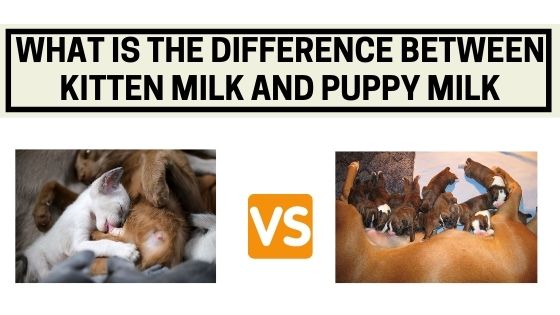If you have ever seen a nursing cat or dog, you are probably interested in what the nutritional contents are. While every single pregnant mammal has mammary glands that form and release milk, not all milks are created equal. Each mammal’s milk has varying ingredients and compositions in order best develop the newborn baby. In today’s article, we are going to discuss the difference between kitten milk and puppy milk.
What is in cat’s milk?
A nursing cat’s milk contains 4 main ingredients. Fat, protein, lactose, and a variety of minerals that is called ash. On average, a cat’s milk will contain around 13% fat, 9% protein, 4% lactose, and 1% ash. While these numbers can vary slightly based on breed, most kitten’s milk has the same content.
What is in dog’s milk?
A nursing dog’s milk also has the same main ingredients as cat milk (fat, protein, lactose, and ash.) A dog’s milk contains around 9% fat, 7% protein, 4% sugar, and 3% ash.
What is the difference between kitten milk and puppy milk?
As you can see from the numbers above, there are definitely a lot of differences between kitten milk and puppy milk. A kitten’s milk contains a higher percentage of both fat and protein. While they both contain around 4% lactose, puppy milk has a much higher percentage of ash. One of the biggest differences between kitten and puppy milk is the iron content, which is much higher in puppy milk.
How do kitten milk and puppy milk compare to other mammals?
Kitten and puppy milk differ greatly from cow milk. Cow milk contains 3% fat, 3% protein, 5% lactose, and 1% ash. When you compare these numbers, you see that cow milk has a much lower percentage of fat and protein compared to puppy and kitten milk.
Can a dog nurse a kitten?
Yes, it is possible for a dog to nurse a kitten, but it is not sustainable. Since dog’s milk contains a lot less protein and fat, the kitten will most likely be under nourished and experience developmental problems.

